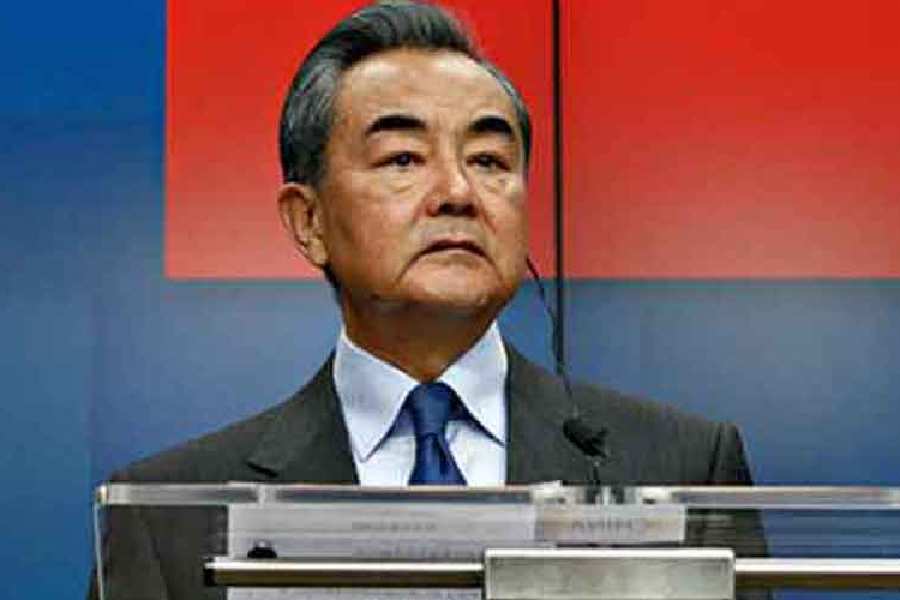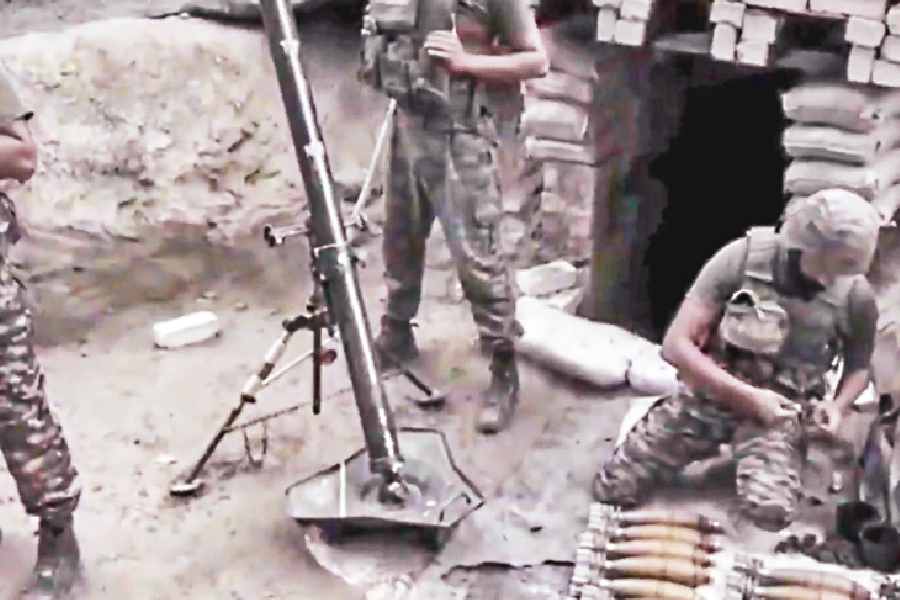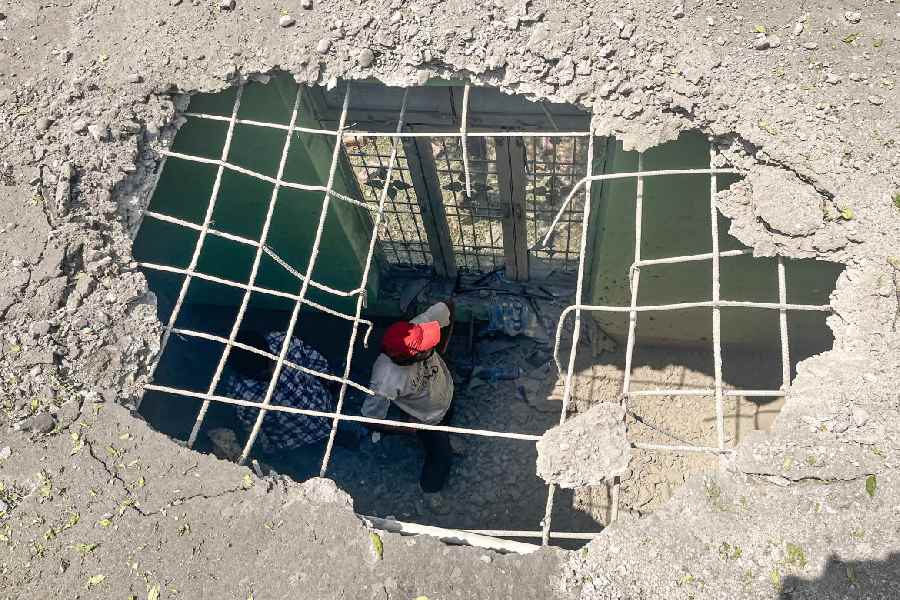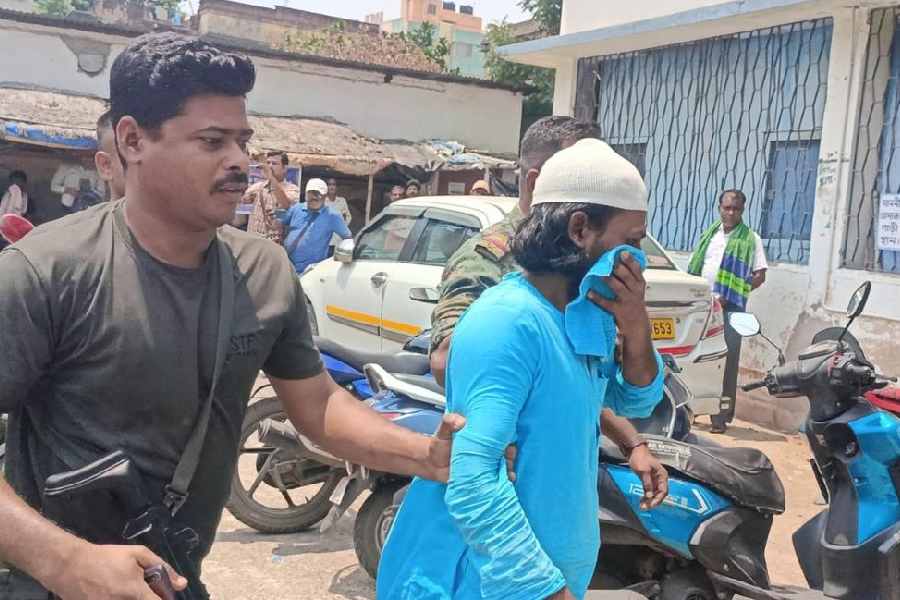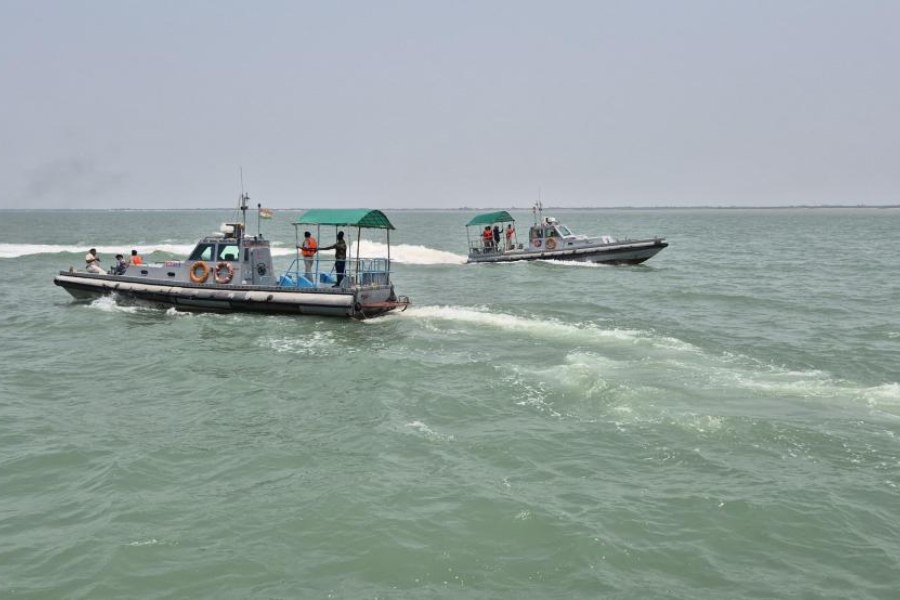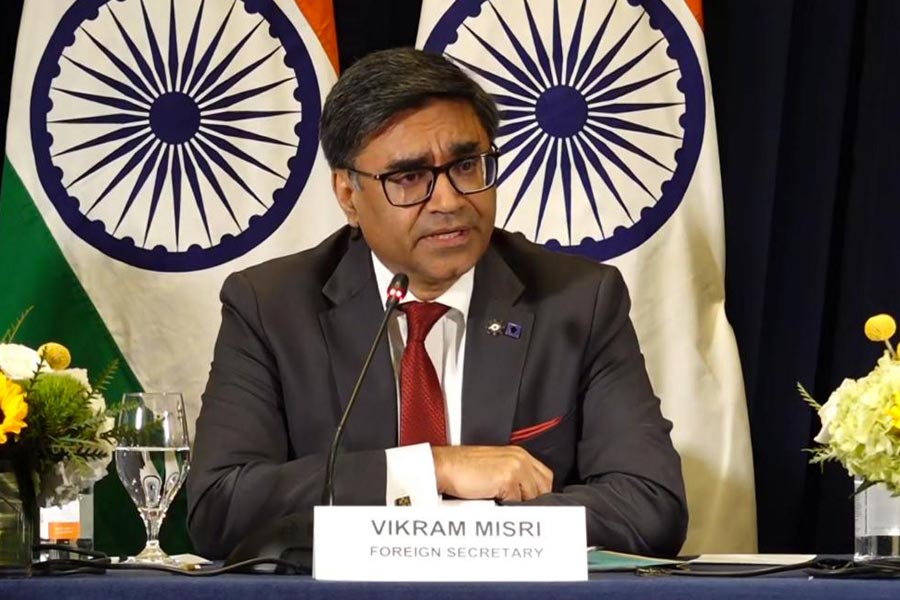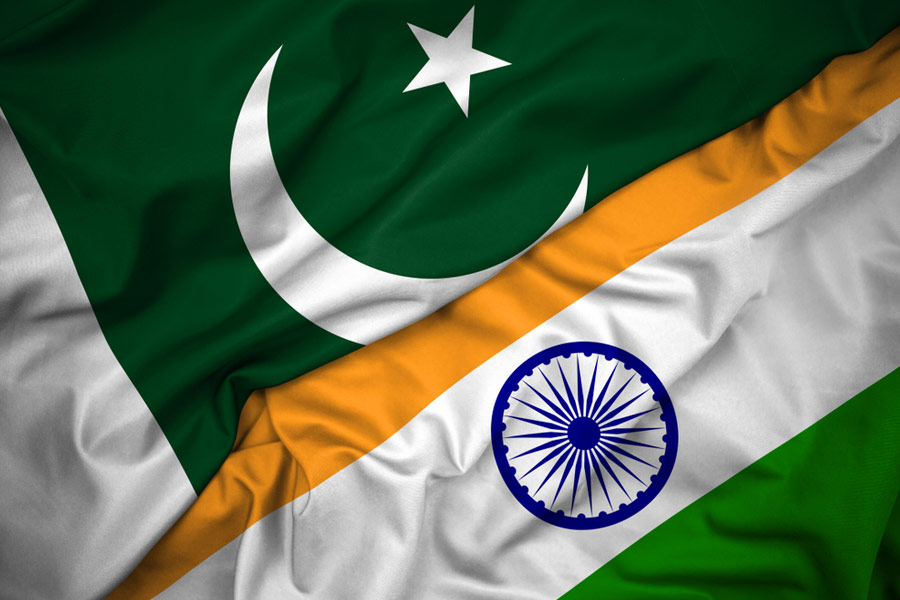 |
 |
 |
 |
 |
| Gundicha temple of Sonepur, which is also known as Nrusimha temple. Telegraph pictures |
Sonepur, April 12: The tallest monument of Sonepur is a victim of lack of vision and maintenance. At 34.7 metre, Gundicha temple is the tallest among the temples of Sonepur. Some renovation was undertaken recently, but it lacked proper planning and as a result the exercise has been a sad waste of money, alleged experts.
Rani Gundicha Devi, wife of Maharaja Prithviraj Singhdeo, had constructed the temple to commemorate the birth of her son Niladri in 1844. Initially, there was a wooden idol of Lord Nrusimha as in the Gundicha temple at Puri. With the passage of time the wooden idol was damaged, and was replaced by a metal (astadhatu) icon or anthropomorphic form of the deity Lord Nrusimha by Maharaja Sri Prataprudra Singh Dev.
The mandapa of the temple was built in 1934 by Maharaja Sri Biramitrodaya Singhdeo. During the car festival, the temple acts as the aunt’s home (mausima temple) of Lord Jagannath, Balabhadra and Subhadra and they are worshipped here. The temple is also known as Nrusimha temple.
Historian Sudam Naik, who has authored several books on the history of Sonepur, said that the inscriptions on the rocks on each of the four doors of the main temple need immediate attention. “The rock inscriptions on the doors of the main temple have to be protected. The two rock inscriptions to the left of the main gate are on the verge of vanishing forever. It needs immediate attention,” Naik said.
He added that the mandapa of the temple was built by Maharaja Biramitradaya Singhdeo.
“The construction of the mandapa started in the year 1922 and was completed in 1934. The walls of the mandapa are a treat for the eyes as they are adorned with brilliantly carved sculptures of the Dasabatara, Navagraha and 24 other gods and goddesses,” he said.
The mandapa has also inscriptions about the story behind construction of the temple.
“The inscriptions in the mandapa contain important information about the temple, including how and why it was built. It also vividly portrays the various landmarks of the Chouhan rulers spanning a period of about 100 years from Maharaja Prithwiraj Singhdeo to Maharaja Biramitradaya Singhdeo,” Naik added.
In spite of the concern of historians, the sorry condition of the monument has not grabbed the attention of the state archaeology department. Many sculptures on the outer walls of the temples have been damaged beyond recognition. Parts of the statues of lions and male and female deities are broken.
Though the district administration took up some renovation works recently, the town residents are not happy with the work. Culture writer Shyama Om Prasad Mishra, who takes an interest in the monuments of the town, described the exercise of renovation by the endowment department as meaningless and a sheer waste of money.
“There was no planning when the renovation was taken up. The temple was of a certain colour. They painted the temple a different colour thereby affecting its originality. A water tank and kitchen of the temple were built, but rather than improve things, they have harmed the monument,” Mishra said. Subarnapur sub-collector Prabhat Kumar Bhoi, who heads the endowment department that looks after the temples of Sonepur, said that he would give attention to protecting the monument. “We have taken up renovation work of the temple time and again, but it’s not enough. A few months back the temple was given a new look after it was painted. Next time whenever we take up any renovation work we will involve people associated with the monument so that the renovation becomes meaningful and helps to protect the age-old monument,” Bhoi said.


